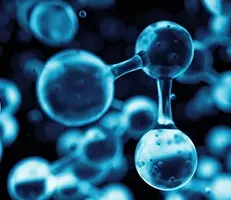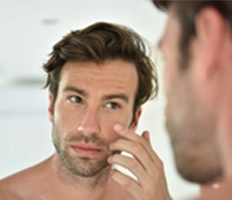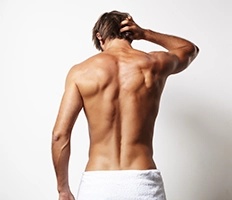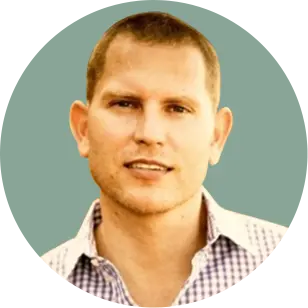- ED Shots
-
by Bradley Keys
Table of contents
- Demystifying the P-Shot: A Revolutionary Approach to Treating Erectile Dysfunction
- Eligibility Criteria for P-Shot Candidates
- The Procedure: Step-by-Step Guide to the P-Shot
- Anticipated Outcomes of the P-Shot
- Risks and Side Effects: A Critical Review
- Comparing Costs: Investment in Sexual Health
- Personal Experiences and Testimonials
- The Role of Complementary Treatments
- Professional Insights: What Medical Associations Say
- Summary
- Frequently Asked Questions
- Additional Research on the P-Shot
Struggling with erectile dysfunction can be challenging. The P-Shot, a treatment involving injections of platelet-rich plasma (PRP), proposes a potential solution without surgery or daily pills. This procedure is experimental and rests on the regenerative properties of your blood to enhance sexual function. In this article, we’ll explore what is P-Shot for erectile dysfunction, how it works, its efficacy, and what you might expect if you’re considering this option.
Key Takeaways
- The P-Shot, or Priapus Shot, is an experimental treatment for erectile dysfunction that utilizes the patient’s own blood-derived growth factors to potentially restore sexual function without invasive surgery or long-term medication.
- Patients must meet eligibility criteria to receive the P-Shot, and the procedure involves a series of injections with platelet-rich plasma (PRP) into the penis, which may require multiple sessions for optimal results.
- While early testimonials suggest improvements in sexual function and erection firmness post-treatment, the medical community seeks more extensive research to fully endorse the P-Shot’s efficacy and safety as a standalone treatment for erectile dysfunction.
Demystifying the P-Shot: A Revolutionary Approach to Treating Erectile Dysfunction

Imagine reclaiming control over one’s sexual health with a pioneering treatment born from the body’s own healing powers. The P-Shot, or Priapus Shot, stands at the forefront of investigative and clinical urology, offering a glimmer of hope for those affected by erectile dysfunction—a form of male sexual dysfunction that affects countless individuals worldwide. This experimental treatment harnesses the body’s own blood-derived growth factors, potentially reigniting the fires of sexual performance without the need for invasive surgery or long-term medication.
The P-Shot treatment, while still experimental, aims to address the very fibers of sexual well-being. By utilizing growth factors from the patient’s blood, the treatment may pave the way for more firm erections, elevated sexual stamina, and a potential resolution to the conundrum of erectile dysfunction. It’s a beacon of hope, illuminating the path to a rejuvenated sexual landscape for many.
The Science Behind Platelet Rich Plasma (PRP) Therapy
Delving into the science of the P-Shot reveals a cornerstone of modern regenerative medicine: platelet rich plasma (PRP) therapy. PRP is a concentration of healing factors—platelets—extracted from one’s own blood. These platelets are the architects of wound healing and the maestros of blood clotting, making them invaluable allies in the battle against various forms of sexual dysfunction.
When injected into the penile tissues, the concentrated platelets from PRP therapy release growth factors, acting as conductors of a symphony of tissue repair and enhanced blood flow. This influx of reparative elements holds the potential to revitalize erectile function, signaling a promising horizon for those seeking refuge from the grip of sexual health issues. PRP injections, akin to the famed Kardashian vampire facial, could be the key unlocking new realms of sexual prowess by improving blood vessels’ functionality.
Understanding How the P-Shot Works
The mechanics behind the P-Shot treatment are as fascinating as they are innovative. The procedure begins with a straightforward blood draw, akin to a routine medical check-up. This blood is then placed in a centrifuge, where it is spun to isolate the platelet-rich plasma (PRP), a golden serum teeming with regenerative potential.
The climax of the treatment involves injecting this PRP into the penis, where it goes to work fostering blood flow and encouraging the growth of healthier penile tissue. This is the magic behind the P-Shot, a potential game-changer in treating erectile dysfunction, aiming to elevate sexual function to new heights with stronger, better erections.
Eligibility Criteria for P-Shot Candidates
Embarking on the P-Shot journey isn’t a decision made lightly. To be considered a candidate, one must first pass through the gate of eligibility, where overall health and specific conditions like Peyronie’s disease and lichen sclerosus are evaluated. The P-Shot treatment, a beacon for those navigating the tempestuous seas of sexual dysfunction, may offer varied success based on individual factors—an intricate tapestry woven with threads of health, history, and personal circumstance.
Healthcare professionals, the navigators of this voyage, assess potential candidates with a discerning eye, considering any pre-existing conditions that could affect the treatment’s effectiveness. Some may find their journey toward sexual rejuvenation requires multiple treatments, while others, like patients post-nerve-sparing prostatectomy, may discover newfound erectile function with fewer sessions.
The Procedure: Step-by-Step Guide to the P-Shot
The P-Shot procedure begins with a simple blood draw from the arm. This sample is then whisked away, spun in a centrifuge to create a concentrated elixir of PRP. With the penis numbed by a local anesthetic, carefully calculated injections deliver this serum into the penile tissues.
A patient generally completes a series of treatments, spaced 1-6 months apart, each a step toward the potential restoration of sexual vitality. The effects have been known to last up to a year though if you are looking to gain size, you will have to combine a P-shot every 2-4 months with consistent use of a penis pump.
Pre-Treatment Considerations
Prior to receiving the P-Shot, one must walk through the preparatory steps, ensuring the path for treatment is clear. Here are the steps to follow:
- Schedule a consultation with a healthcare professional, such as a primary care physician or a urologist.
- During the consultation, discuss your medical history, including any conditions or medications that could influence the treatment’s course.
- If you have a history of genital herpes, your healthcare professional may recommend antiviral prophylactic treatment before the P-Shot.
Following these steps will help ensure a safe and effective P-Shot treatment.
The preparatory ritual includes:
- Abstaining from blood thinners and NSAIDs
- Turning instead to Acetaminophen for pain relief
- Taking Arnica Homeopathic tablets to mitigate bruising
- Having a small meal before the procedure to stay steady, as blood will be drawn
This is a small sacrifice for the promise of renewed sexual health.
During the Treatment

During the treatment, the patient lies in comfort, the genital area rendered numb by a local anesthetic, ensuring the injections are but a whisper of sensation. For those who find anxiety a shadow in their journey, anti-anxiety medication may be offered, casting a light of calm over the procedure.
The PRP serum, now ready for its debut, is injected into the penis with precision, using a fine needle to ensure an even spread of these potent growth factors. Each injection is a step on the path to improved sexual function, a journey undertaken with care and expertise.
Post-Treatment Expectations
After the curtain falls on the P-Shot procedure, recovery is swift, with patients encouraged to return to their daily routine, albeit with a brief hiatus from sexual activity. This pause in one’s sex life is a small price for the tissue growth and healing that silently unfolds within.
Yet, the response to the P-Shot is as unique as each individual, with some noticing immediate improvements and others observing a gradual awakening of function over several months. The treatment’s true potential: male enhancement with a bolstered sexual performance, may continue developing, with the benefits of collagen remodeling unfurling up to six months post-treatment.
Anticipated Outcomes of the P-Shot

The P-Shot whispers promises of sexual rejuvenation, with outcomes that could range from immediate improvements to a slow bloom of change over months. The potential for enhanced sexual performance and the alleviation of erectile dysfunction beckons, a call to those yearning for a return to sexual vitality. As mentioned, several patients do see a size increase (some noting up to .5″ of length and girth though results vary).
Age, BMI, and health conditions such as hypertension or diabetes do not dim the P-Shot’s potential. With a recommendation of two to three injections for optimal results, the treatment is a testament to the belief that sexual health can indeed be reclaimed.
Risks and Side Effects: A Critical Review
The P-Shot, like any treatment, comes with a scroll of potential side effects—though these are commonly mild, such as tingling, swelling, or bruising. A minority of patients may experience subcutaneous bruising at the injection site, a small price for the pursuit of sexual enhancement.
Yet, the efficacy of PRP therapy for treating erectile dysfunction remains under the critical review of peer-reviewed studies. Though generally safe with high patient tolerance, the medical community continues to seek a deeper understanding, aiming to fully endorse the P-Shot’s benefits with a more substantial body of research.
Comparing Costs: Investment in Sexual Health
The financial landscape of the P-Shot treatment is as varied as the patients it serves. Costs can swing from the hundreds to the thousands, yet health insurance plans often step back from covering this investment in one’s sexual health.
Despite the absence of insurance coverage, the P-Shot remains a bastion of cost-effectiveness when matched against other erectile dysfunction treatments. Its outpatient nature and avoidance of surgical intervention make it a beacon for those navigating the financial waters of sexual enhancement.
Personal Experiences and Testimonials
The tapestry of personal experiences with the P-Shot is rich and varied. Men step forward with tales of renewed sexual desire, erection firmness, and a satisfaction that transcends their previous sexual experiences.
These narratives speak of not just functional improvement but physical transformation as well—increases in length and enhancements in penile health that emerge post-P-Shot. For some, these changes unfurl rapidly; for others, they develop over months, a testament to the procedure’s potential to reshape more than just erectile function.
The Role of Complementary Treatments
The journey to improved erectile function and treat erectile dysfunction may be bolstered by allies—complementary treatments that, when paired with the P-Shot, can enhance its efficacy. Some of these allies include:
- The disciplined use of a penis pump
- Lifestyle adjustments
- Stress reduction techniques
- Nitric boosting supplements like Vigor
- Ensuring adequate sleep
All of these contribute to the symphony of sexual health.
These adjunctive therapies, from the mechanical support of a penis pump to the holistic influence of mindfulness and diet, create a robust environment for the P-Shot’s growth factors to flourish. Together, they form a coalition that supports the body’s natural healing and regenerative processes, optimizing the treatment’s impact on erectile function.
Professional Insights: What Medical Associations Say
As the P-Shot navigates the waters of medical innovation, professional insights offer a compass guiding its journey. Medical associations, the custodians of clinical integrity, acknowledge the potential of PRP injections to improve erectile function but call for the charting of more extensive, high-quality research to solidify its place in sexual health treatments.
The buzz of ongoing clinical trials resonates through the halls of urology, a symbol of the medical community’s commitment to refining the P-Shot’s protocols and outcomes. The quest for evidence-based standardized protocols continues, a beacon of hope for establishing the treatment’s efficacy and safety.
Summary
As our exploration of the P-Shot draws to a close, we are left with a landscape of potential—a treatment that offers a non-invasive answer to erectile dysfunction, woven with the promise of enhanced sexual performance and underscored by the diligent pursuit of medical research. The P-Shot stands as a testament to the innovative spirit of sexual health treatments, offering a beacon of hope for those navigating the complex seas of sexual dysfunction.
Frequently Asked Questions
The potential side effects of the P-shot include minor bleeding or bruising, swelling, and a very rare chance of infection. It’s important to be aware of these risks before considering the treatment.
Results from the P-Shot can vary, with some men experiencing improvements within 24 hours and others seeing changes over several months. It is often recommended to undergo two to three treatments for optimal outcomes.
The P-Shot is not typically painful, as the penis is numbed with a local anesthetic before the procedure to minimize discomfort. Some patients may also opt to take anti-anxiety medication to further ease the experience.
No, the P-Shot is usually not covered by health insurance because it is considered an elective treatment for erectile dysfunction and enhancement purposes.
Yes, the P-Shot has been used to treat conditions such as Peyronie’s disease and lichen sclerosus, showing potential benefits in sexual performance and orgasm quality.
Additional Research on the P-Shot
- Israeli, Joseph M., Soum D. Lokeshwar, Iakov V. Efimenko, Thomas A. Masterson, and Ranjith Ramasamy. “The Potential of Platelet-Rich Plasma Injections and Stem Cell Therapy for Penile Rejuvenation.” International Journal of Impotence Research, November 6, 2021, 1–8. https://doi.org/10.1038/s41443-021-00482-z.
- Poulios, Evangelos, Ioannis Mykoniatis, Nikolaos Pyrgidis, Filimon Zilotis, Paraskevi Kapoteli, Dimitrios Kotsiris, Dimitrios Kalyvianakis, and Dimitrios Hatzichristou. “Platelet-Rich Plasma (PRP) Improves Erectile Function: A Double-Blind, Randomized, Placebo-Controlled Clinical Trial.” Journal of Sexual Medicine 18, no. 5 (May 1, 2021): 926–35. https://doi.org/10.1016/j.jsxm.2021.03.008. A very helpful study; but, interesting that they did this study and claim to be “the first clinical trial exploring the role of PRP in the management of ED” as if all the other papers on this page do not exist.
- Bosma-Den Boer, Margarethe M., Marie Louise Van Wetten, and Leo Pruimboom. “Chronic Inflammatory Diseases Are Stimulated by Current Lifestyle: How Diet, Stress Levels and Medication Prevent Our Body from Recovering.” Nutrition and Metabolism 9 (2012). https://doi.org/10.1186/1743-7075-9-32.
- Casabona, Francesco, Ilaria Gambelli, Federica Casabona, Pierluigi Santi, Gregorio Santori, and Ilaria Baldelli. “Autologous Platelet-Rich Plasma (PRP) in Chronic Penile Lichen Sclerosus: The Impact on Tissue Repair and Patient Quality of Life.” International Urology and Nephrology 49, no. 4 (April 2017): 573–80. https://doi.org/10.1007/s11255-017-1523-0.












